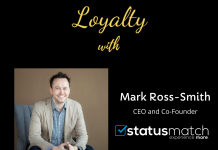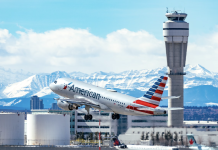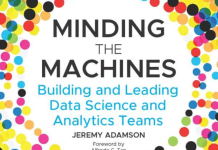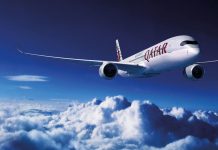
Do you understand your customers?
How do airlines identify customer needs?
How can loyalty programs use that data to improve customer loyalty?
Understanding your customers is more important now than at any other point in the history of the business.
Customers have a choice of which brands they want to transact with, and if your brand isn’t fulfilling their emotional needs a customer – another brand will!
Many airlines talk the talk on knowing their customers, and some airlines have fantastic products that their customers love. But, does that translate into incremental revenue and improved customer satisfaction?
How can airlines and hotels better understand their customers?
Five key metrics every airline and hotel loyalty program should be focusing on.
1. Share of Wallet
How much of your customer’s spend is your business capturing today?
Chances are, your customers also do business with your competitors. It’s essential to know how much your customers are spending with the competition. After all, if your business doesn’t know how much revenue is on the table – how is it possible to measure success?
Traditional metrics like average revenue per user, basket size, frequency of repeat purchase are great for short term tracking. To track long term health of the loyalty proposition, measuring growth and share of wallet/share of spend is the golden metric.
Understanding your customers through share of wallet tracking can be achieved by partnering banks, telcos, start-ups and other third parties.
Airlines are using the share of wallet data to track when passengers fly with competing airlines.
2. Behavioural Insights
Why did your customer make that last reservation?
Both hotels and airlines can benefit from understanding why the customer made the booking. Simply knowing the booking is for leisure travel can be useful for simple actions such as what ancillary options to present to the customer. Consider the leisure traveller has a family with young children and booked a flight ticket.
Showing ancillary upsells to an exit row is a waste of real estate as young children can’t sit in exit rows. Instead, if your airline sells meals onboard – present a ‘meal bundle’ which acknowledges the customer will purchase multiple meals for their family.
Cebu Pacific increased ancillary revenue by AUD $630,000 on pre-return trip emails, by leveraging the Boxever platform.
Our other articles on How Airlines Use Big Data To Drive Revenue explores this topic deeper.
3. Customer Propensity Scoring
How likely is your customer likely to apply for the co-brand credit card?
After a passenger completes a single online reservation with an airline, it’s possible for the airline to know how likely that passenger is to apply for the airline credit card. By scoring passengers based on the number of similar features their profile has with existing co-brand credit card holders, the airline is able to effectively target marketing offers to the right passengers.
British Airways began trailing a program years ago that would look at actions passengers were taking after joining the British Airways Executive Club.
New blue members that displayed similar traits to those of existing Gold members, were put on a fast-track path to Gold. These members were sent special marketing offers and treated like high-value customers well before they were actually spending the big bucks.
Learn more about propensity scoring for airlines and hotel loyalty programs.
4. Shadow Members
Not every customer wants to join your loyalty program
Shadow members are customers who have transacted with your business but did not want to join your newsletter or loyalty program. For hotels, these are guests that booked via OTAs and where limited details on the guest are available.
It’s imperative that loyalty programs create a shadow profile for these members, and begin tracking their activity as if they are fully-fledged loyalty program members.
Why track customers who don’t want to be members?
Consider that many ultra-high value frequent flyers don’t join loyalty programs. They’re already rich and only buy first class tickets, so why do they care to earn some miles?
There are major revenue advantages for airline loyalty programs:
- Fast-track customer acquisition for loyalty programs. Reminding passenger to ‘claim their miles’ will stimulate new full profile members, which in turn drives increased engagement in a segment who were previously not engaged.
- Commercially savvy frequent flyer programs in the major global alliances are using retro signups on shadow memberships to drive increased revenue from cross-carrier billing.
- Loyalty program members are more likely to book directly through the airline/hotel website, instead of using a travel agent. For hotels – the savings can be significant.
- Revenue protection. Ensuring that front-line staff extend VIP benefits and privileges to shadow members who might otherwise be top-tier elite status goes a long way to retaining business.
5. Sentiment Analysis
Do your customers care about your brand?
When changes are made to the loyalty program – there will be a behavioural impact on your member base. The DNA of your core members interact with your product will change – for the better or worse, depending on how the loyalty changes affect their comfort zone.
How your existing customers feel about your brand and your loyalty program will determine if, how, and when they next transact with your business.
To ensure that your brand is top-of-mind the next time the customer is in the market to transact, knowing what your brand sentiment is in that individual customer’s mind will provide insight into the chances of that customer buying your product.
For example
John is a frequent flyer. He recently returned from a trip and on the flight, he had an excellent experience. In fact – the airline upgraded his ticket to First Class, for free! He was happy about the entire flight experience and even told his work colleagues how great the airline is to fly.
Consider: At this point – does the airline know John had a great experience? Is the airline tracking this? How would the airline track it?
A few days later, John’s wife travels on the same airline and has a terrible experience. She had a four-hour delay, was assigned a middle-seat at the back of the plane, the airline ran out of catering by the time the cabin crew got to her row. The airline also lost her bags, and the ground staff were tired and didn’t seem to care.
Johns wife shares the details with her husband and John doesn’t book any future flights with the airline.
Johns spend and loyalty with the airline is based on his experiences, AND, the people around him.
The job of the airline is to know who John is connected to (achieved by big data measurement), and monitoring the sentiment of each of these individuals in Johns network. The more proactive the airline is in monitoring and taking preemptive action, the better.
Cathay Pacific lost up to $1 billion by changing their Marco Polo loyalty program in 2015, which was tracked on social media channels using sentiment analysis of Silver, Gold and Diamond members.
Understanding the customer is more important now
Airline and hotel loyalty programs are becoming ever more profitable, and sophisticated.
Understanding the customer is more important now than ever before.
The financial payoff is there for organisations that are willing to invest the resources into improving the data intelligence tools.
The outcomes from the data intelligence can be used to fuel real-time decision-making engines, to identify customers at risk of churning away from your business and much more.
However, it’s important to consider that not every organisation is ready to exploit data-driven opportunities.
For my loyalty program professional peers out there – consider the following to weigh up if this move is right for you.























